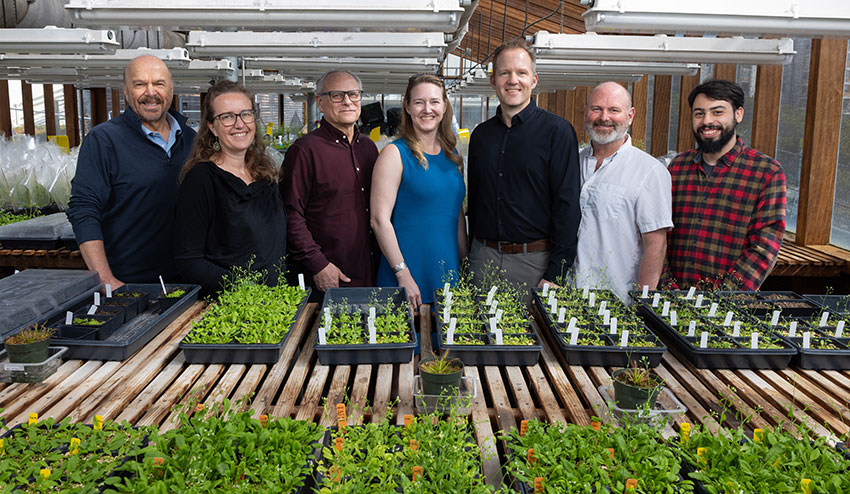Harnessing Plants Initiative

“If we can optimize plants’ natural ability to capture and store carbon, we can develop plants that not only have the potential to reduce carbon dioxide in the atmosphere but that can also help enrich soils and increase crop yields.”
–Joanne Chory (1955-2024), Salk professor and Harnessing Plants Initiative founding director
Addressing Major Global Challenges – With Plants
Founded in 2017, the Salk Institute’s Harnessing Plants Initiative (HPI) is an example of scientists in the Salk Institute’s plant biology program accelerating basic science to meet real-world needs. The Initiative started as a bold idea that continues to guide all of Salk plant science research: We can enhance plants’ natural traits to solve global problems.
Salk research is now leading the way in removing carbon from the atmosphere and storing it in the soil, where it contributes to healthier ecosystems, increased crop resiliency, and more sustainable agriculture. HPI comprises two bold programs:
CO2 Removal on a Planetary Scale
The CO2 Removal on a Planetary Scale (CRoPS) project is developing Salk Ideal Plants, which puts CO2 in the ground and keeps it there. By increasing root mass, depth, and amount of suberin—a naturally occurring plant tissue that loves carbon—Salk researchers have transformed wheat, rice, corn, and other crops into carbon-storing machines. In addition, longer roots and more ground carbon mean farmers also benefit from improved drought tolerance and soil health.
Wolfgang Busch
HPI Executive Director
Coastal Plant Restoration
Wetlands store as much as 100 times more carbon per acre than dry land, but they’re disappearing fast. As they erode, wetlands release carbon, further complicating our atmosphere and environment. Salk’s Coastal Plant Restoration (CPR) project is developing wetland plants that hold carbon, purify water, preserve land, and can thrive in challenging environments around the world. To do this, the team is taking an approach that uses genetic information to ensure species are healthy, resilient, and able to adapt to changing environments.
Joseph Noel
Lead Researcher
